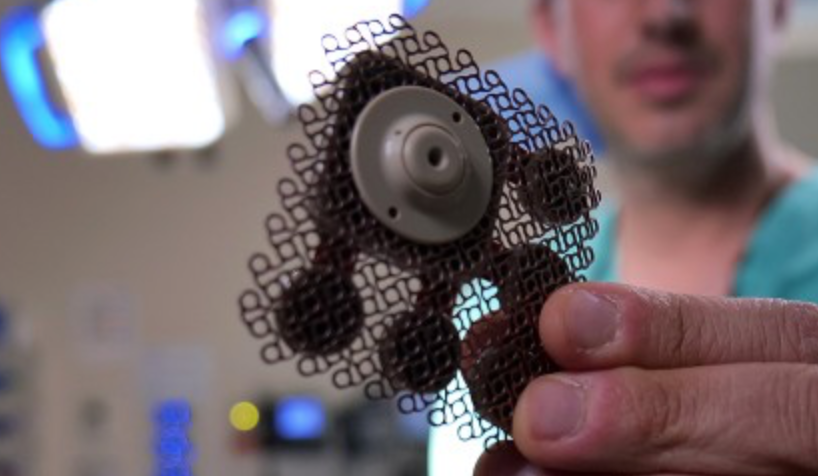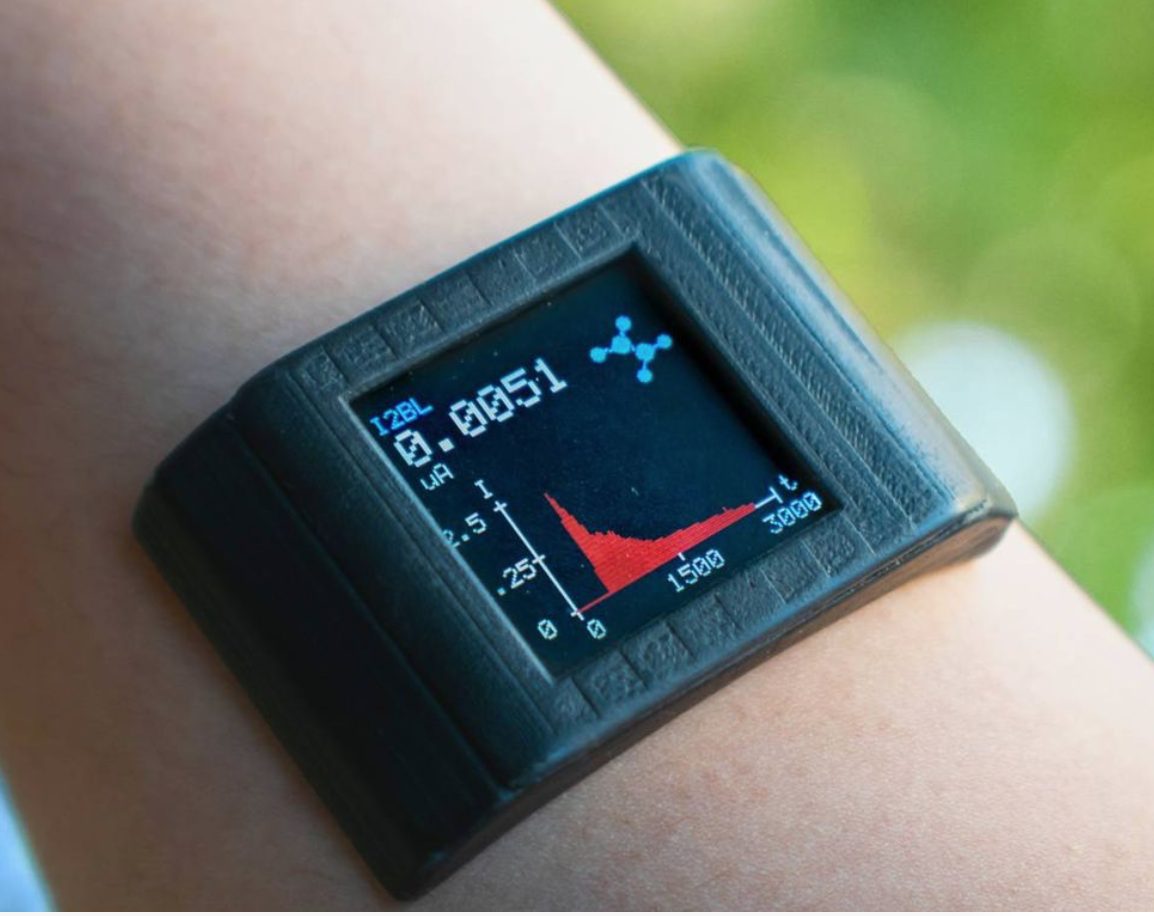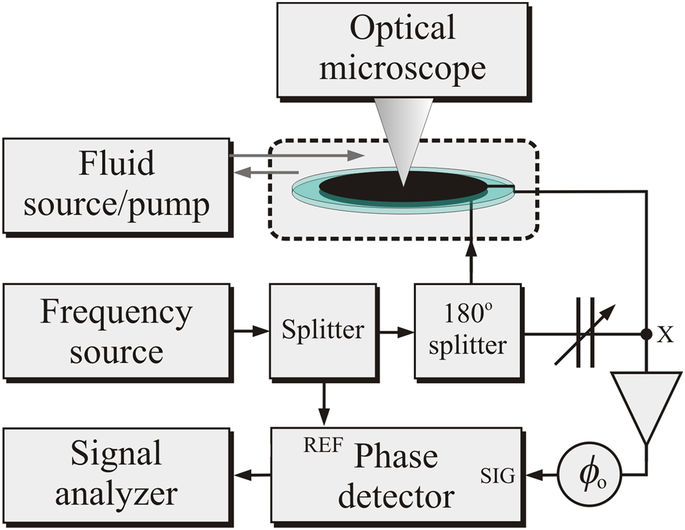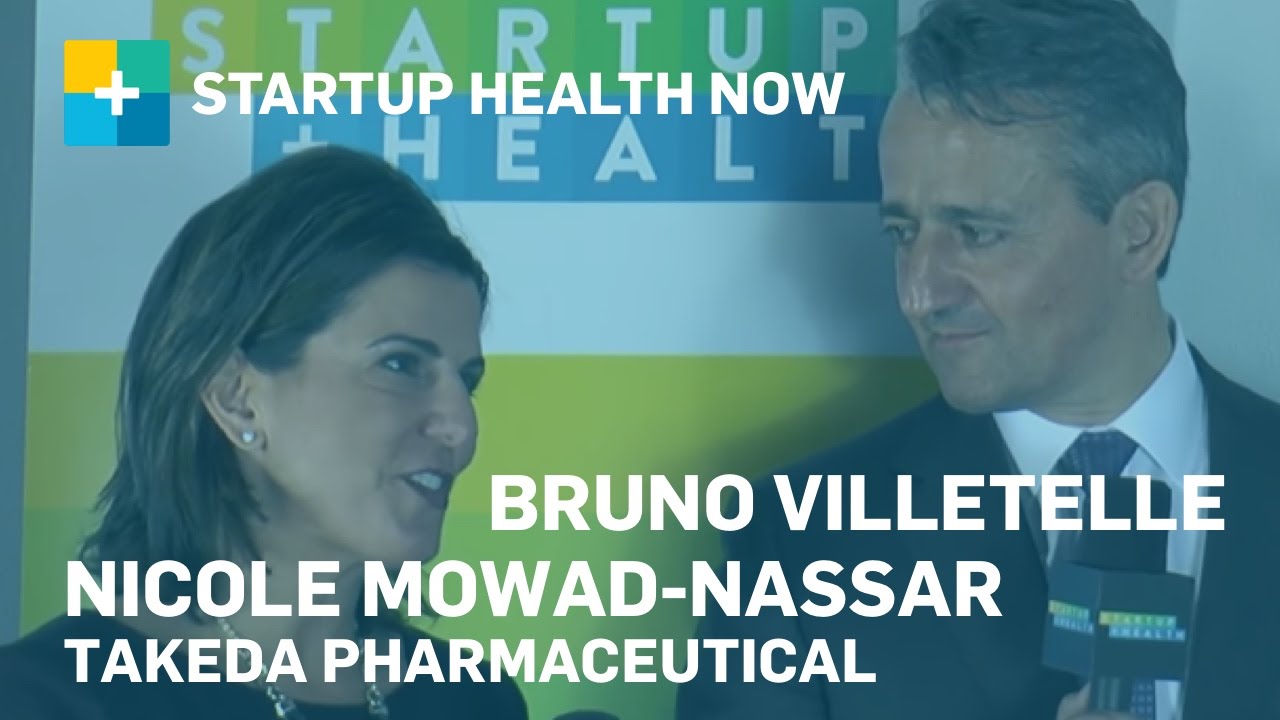Category: Pharmaceuticals
-

Implanted ultrasound allows powerful chemotherapy drugs to cross the blood brain barrier
Adam Sonaband and Northwestern colleages used a skull-implantable ultrasound device to open the blood-brain barrier and repeatedly permeate critical regions of the human brain, to deliver intravenous chemotherapy to glioblastoma patients. This is the first study to successfully quantify the effect of ultrasound-based blood-brain barrier opening on the concentrations of chemotherapy in the human brain.…
-

Donanemab slowed memory decline by 35%, disease progression by 39%, in Alzheimer’s trial
Patients who received Eli Lily’s monthly donanemab infusion in an 18-month study demonstrated a 35% slower decline in memory, thinking, and ability to perform activities of daily living, and were 39% less likely to progress to the next stage of the disease. Brain plaque was also reduced significantly. The risk of the drug is brain…
-

Sweat sensor monitors drug levels, informs dosage
Sam Emaminejad, Shuyu Lin, Carlos Milla, Ronald Davis and UCLA and Stanford colleagues have developed a watch which monitors drug levels inside the body by analyzing a wearer’s sweat. The goal is individually tailored drug dosages. Dosages are currently prescribed based on statistical effectiveness averages driven by weight and age. However, constantly changing body chemistry…
-

VR-enhanced molecular simulations
University of Bristol researchers, Oracle and Interactive Scientific have used Oracle’s cloud infrastructure to combine real-time molecular simulations with VR, enabling them to “touch” molecules as they move — highlighting the potential of VR in seeing and manipulating complex 3D structures. The technology could change how drugs are designed, and transform the teaching of chemical…
-

Piezoelectric sensor determines antibiotic efficacy in 1 hour
Ward Johnson and NIST colleagues have developed a piezoelectric sensor to rapidly determine whether an antibiotic combats an infection. Quartz-crystal resonators, with varying vibrations, measure surface particle changes, to quickly sense mechanical fluctuations of bacterial cells and changes induced by an antibiotic. Results are provided in less than an hour. Current antimicrobial tests require days…
-

Sanofi/Verily joint venture to fight diabetes
Big pharma + big tech/data partnerships continue to proliferate. Onduo is a Sanofi/Verily joint venture that will use each company’s expertise to help manage diabetes — Sanofi’s drugs plus Verily’s software, data analysis, and devices. CEO Josh Riff and has not announced a project pipeline, as they are taking “a thoughtful approach to finding lasting…
-

Takeda’s digital transformation
Pharmaceutical giant Takeda is amid a digital transformation — with a patient-centric approach to drug development, wearable device adoption, and sophisticated data analysis. Leading this effort is Bruno Villetelle, Takeda’s Chief Digital Officer. Bruno was a keynote speaker at ApplySci’s recent Wearable Tech + Digital Health + NeuroTech San Francisco conference, where he discussed digital pharma…
-

Portable, on-demand biopharmaceutical manufacturing
Tim Lu and MIT colleagues are developing a microfluidic/programmable yeast system to produce small batches of pharmaceuticals on demand. The project, which could deliver biologic medications, including vaccines, to remote locations, for both military and civilian use, was funded by DARPA. The team cultivated Pichia pastoris, a programmable yeast that grows densely and is able…
-

Big data / pharma partnership to model diseases, treatments
IBM and Israeli generic drug giant Teva will partner to develop treatments for chronic conditions using the Watson Health Cloud. Their stated goal is “to put the best information and insights in the hands of physicians, care teams and patients, to empower treatment optimization for individuals and populations across the spectrum of acute and chronic conditions.” Asthma, pain,…
-
Ingestible sensors alert doctors and caregivers when a pill is taken
http://www.forbes.com/sites/nextavenue/2013/04/16/the-newest-high-tech-pill-will-text-when-swallowed/ Proteus Digital Health is creating a new category of products, services and data systems that have the potential to significantly improve the effectiveness of existing pharmaceutical treatments. Called Digital Medicines, these new pharmaceuticals will contain a tiny sensor that can communicate, via a digital health feedback system, vital information about an individual’s medication-taking behavior…